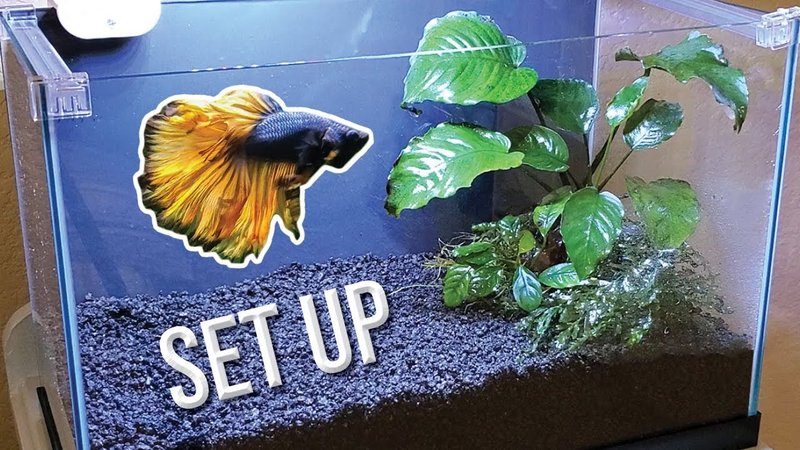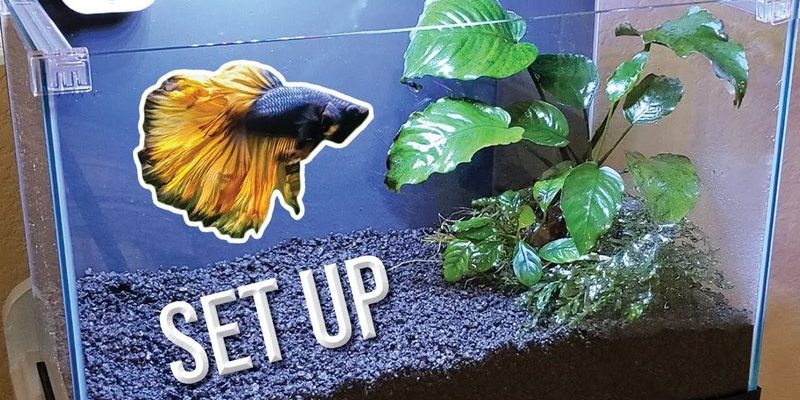
Before we jump in, let me clarify something really important: not all plants or substrates work for every fish tank. Bettas are unique creatures with specific needs, both in terms of their environment and their well-being. Choosing the right mix of plants and substrate can make your betta’s world a vibrant and healthy one. So, grab your coffee, and let’s explore how you can turn that tank into a betta-friendly oasis!
Why Plants Matter in a Betta Fish Tank
You might be wondering why incorporating plants is so crucial for a betta tank. Well, plants do more than just look pretty! They provide shelter, help maintain water quality, and even serve as a source of food. Here’s a deeper look at what makes plants essential for your betta’s home:
Natural Habitat: In the wild, bettas thrive in lush environments filled with vegetation. Plants mimic this natural setting, giving your fish a sense of safety. When your betta has places to hide or rest, it can reduce stress and enhance its overall health.
Water Quality: Live plants help improve the tank’s water quality. They absorb harmful toxins, like ammonia and nitrates, which can be detrimental to your fish’s health. This means your betta can enjoy cleaner, safer water, which is a win-win for both of you!
Oxygen Production: Plants produce oxygen during the day through photosynthesis. This added oxygen can be beneficial, especially if you have a smaller tank that may struggle with oxygen levels. More oxygen means a happier and more active betta!
Best Plants for Betta Fish Tanks
Now that we’ve covered why plants are important, let’s talk about the best choices for betta tanks. Choosing compatible plants is essential, so here are some top options:
- Anubias: This hardy plant is perfect for beginners. It can thrive in low light and doesn’t require much maintenance. Anubias can be attached to driftwood or rocks, which makes it versatile for tank layout.
- Java Fern: Another great option, Java Ferns are sturdy and can also attach themselves to décor in the tank. They provide shelter without overwhelming your betta’s space.
- Spotted Water Sprite: This plant has delicate, feathery leaves that bettas love to hide in. It’s easy to grow and adds a lovely touch to the tank.
- Marimo Moss Balls: These unique little balls are not only adorable but also beneficial. They help improve water quality and provide a fun texture for your betta to explore.
When selecting plants, it’s wise to avoid any sharp-leaved varieties. Bettas have long fins that can easily get torn, leading to stress or injury. Always err on the side of caution when choosing plants for your fishy friend!
Importance of Substrate in Betta Tanks
Let’s shift gears and talk about substrate, which is the material that lines the bottom of your tank. The right substrate helps create a healthy environment for both your plants and your betta. Here’s why substrate matters:
Root Support: If you’re using live plants, the substrate provides them with essential nutrients. The roots need a good anchoring space, and the right substrate can help them flourish.
Water Filtration: Different types of substrate can help with filtration. Some gravels can support beneficial bacteria, which assist in breaking down waste and keeping the tank clean.
Natural Aesthetics: Substrate also plays a big role in the tank’s overall look. The right color and texture can enhance the beauty of your plants and fish, creating a visually pleasing environment.
Best Substrate Options for Betta Fish Tanks
When it comes to choosing substrate for your betta tank, you have a few standout options that will work beautifully with your plants:
- Gravel: Standard aquarium gravel is a popular choice. It provides good drainage and is easy to clean. Choose a smooth gravel to avoid hurting your betta’s fins.
- Sand: If you prefer a softer look, sand can be a great choice. It’s easier for plants to root in, and it doesn’t trap debris as much as gravel does. Just make sure it’s a fine grain.
- Planting Soil: If you want to create a lush, plant-heavy tank, consider planting soil specifically designed for aquariums. It provides nutrients for your plants but requires careful maintenance to prevent cloudiness in the water.
When selecting substrate, always consider how it will interact with your plants and betta fish. The right substrate will enhance both the health of your plants and the overall environment of your tank.
How to Arrange Plants and Substrate Effectively
So, you’ve picked your plants and substrate—now what? Arranging them properly can make a huge difference in the tank’s appearance and your betta’s happiness. Here are some tips for setting everything up:
Layering is Key: When setting up your tank, consider layering. Place the heavier substrate at the back and lighter materials toward the front. This creates a natural slope and allows for better visibility of your betta swimming around.
Provide Hiding Spots: Arrange plants in clusters to create hiding spots for your betta. They love to explore and feel secure, so having these little hideaways can help reduce stress.
Leave Open Swimming Space: While you want a lush environment, it’s important to leave enough open space for your betta to swim freely. They enjoy darting around, so balance is crucial!
Common Mistakes to Avoid
Even with the best intentions, it’s easy to make mistakes when setting up your betta tank. Here are some common pitfalls to watch for:
Overcrowding: One of the biggest mistakes is overcrowding the tank with too many plants. This can lead to poor water circulation and limit your betta’s swimming space. Always prioritize leaving enough room for movement.
Choosing the Wrong Plants: Not all plants are suitable for a betta tank. Avoid sharp-leaved varieties that can tear their fins and stick to softer, more forgiving types.
Neglecting Care: Just like your betta needs care, so do your plants. Make sure to provide the right light, nutrients, and water conditions to keep both happy and healthy.
Final Thoughts on Betta Fish Tanks
Creating an appealing and functional tank for your betta fish is genuinely fulfilling. By selecting the right plants and substrate, you’re not just making your aquarium visually appealing; you’re also supporting your fish’s health and happiness. Remember, the goal is to create an environment that resembles their natural habitat, allowing them to exhibit their natural behaviors.
The journey doesn’t stop after the setup. Regular maintenance and monitoring are key to ensuring your betta thrives. So, take your time with the process, and don’t hesitate to experiment with different plants and arrangements until you find what works best for you and your betta. With the right combination, you’ll have a stunning aquarium that you can both enjoy for years to come!

